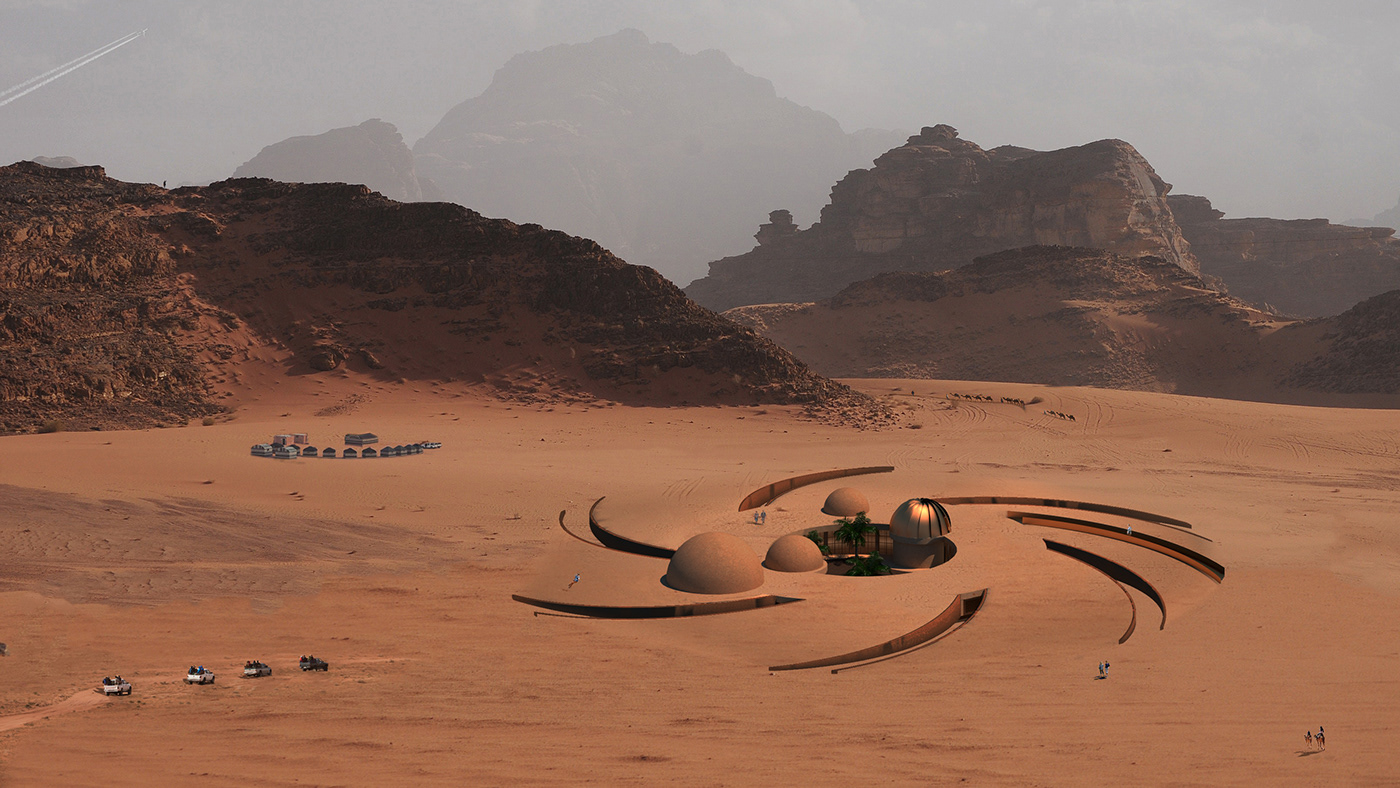

The Mars Experience Museum is located in the Wadi Rum desert, where the red-colored sand creates a landscape resembling that of Mars, while towering rock formations mark the valleys and canyons. Due to the desert climate, temperatures are high for most of the year, with minimal rainfall.
The entire building is buried in the sand, allowing for better energy efficiency and respect for the surrounding environment. The only elements protruding from the ground are four hemispheres indicating the positions of the planets on the day of the discovery of Mars. All the spaces are arranged around the central courtyard.
The principle of wind towers has been employed, where air is channeled and naturally cooled through a water mirror at the center of the courtyard. This system ensures both ventilation and natural cooling. Given the large windows in the courtyard, a mechanized device has been designed to shade only the areas exposed to direct sunlight.
The entire building is buried in the sand, allowing for better energy efficiency and respect for the surrounding environment. The only elements protruding from the ground are four hemispheres indicating the positions of the planets on the day of the discovery of Mars. All the spaces are arranged around the central courtyard.
The principle of wind towers has been employed, where air is channeled and naturally cooled through a water mirror at the center of the courtyard. This system ensures both ventilation and natural cooling. Given the large windows in the courtyard, a mechanized device has been designed to shade only the areas exposed to direct sunlight.

After the initial analysis of the interior lighting conditions using the Grasshopper software, it became apparent that a shading device was necessary for the large windows in the central courtyard of the project. Due to the circular design of the building, a fixed shading system was not feasible as it was challenging to determine a fixed angle for the shading elements that would ensure proper interior lighting. To achieve maximum efficiency, a mechanized device was conceived to shade only the areas exposed to direct sunlight.
The modular system consists of double-glazed windows with a space between them filled with sand contained within the frame. The filling or emptying of the space is achieved through a rotational motion. To mitigate the risk of excessive shading, the filling material consists of a mixture of sand and glass beads in a 50-50 ratio.
The modular system consists of double-glazed windows with a space between them filled with sand contained within the frame. The filling or emptying of the space is achieved through a rotational motion. To mitigate the risk of excessive shading, the filling material consists of a mixture of sand and glass beads in a 50-50 ratio.





